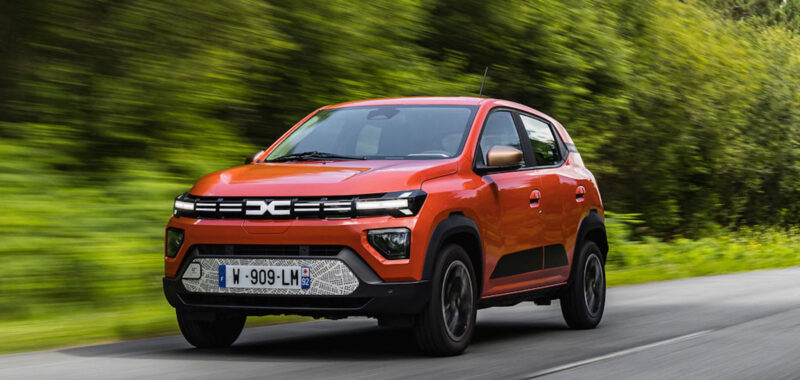The Spring is built, as is helpful for budget EVs, in China, on a platform originally created for India’s combustion-engined Renault Kwid. The Spring has been on sale in left-hand-drive markets since 2021, but a mid- life facelift has given Dacia the opportunity to make it in right-hand-drive form too after calculating that the profitability numbers stack up – or at least if they don’t quite stack up for the Spring alone, they will push the Renault Group’s EV sales into a zone where it can sell some more profitable ICE cars alongside it.
The revised exterior has replaced the original Spring’s car-like appearance with something more quadricycleish – at least to my eyes.
Perhaps more significant is the redesigned interior, which while not using terrifically feelsome materials does feature some interesting design touches, a 10in infotainment touchscreen and a 7in digital instrument cluster. There’s a new steering wheel that’s now height-adjustable.
Dynamically, there’s a revised power steering tune, but the spring and damper rates are unchanged.
White is only the no-cost paint colour (add £650 for one of the other five), while 64bhp cars have 15in alloys instead of 14s, and UK cars all get air-conditioning, electric front windows, remote central locking, rear parking sensors, USB ports, a 12V socket and cruise control.
Extreme trim adds some copper- coloured finishing touches, electric mirrors and rear windows, sat-nav, smartphone integration and a bi- directional charger (which allows the car to power external devices). Dacia says the Spring is the greenest electric car on sale, owing to the fact as well as emitting no tailpipe gases, it’s a small car with a small frontal area and carries very few added kilos and extras where they’re not needed. Remarkably for an EV, it comes in at under a tonne. An organisation called Green NCAP gave it five stars.
Another NCAP, the one you will have heard of, feels differently about it, giving it a one-star safety rating that Dacia has reacted to with a shrug of its shoulders and a reminder that it meets all mandatory regulations and that buyers don’t care. The Spring has been given lane- keeping and speed-limit assistance to comply with the EU’s new General Safety Regulations, plus an button to easily switch them in and out. The Spring’s motor and inverter sit under the bonnet, where there’s room for an optional cable storage box, while the 26.8kWh battery is sited beneath the rear seats. It can charge on three-pin or 7kW AC power and up to 30kW on DC power. It gives a 140-mile official range with either motor, thanks to energy consumption of 4.6mpkWh.
This kind of range is something that a combustion city car like the Kia Picanto would laugh at, of course, but Dacia is finding that buyers take four trips on average a day, measuring just 23 miles in total, and with 75% of them charging from home, it’s the very definition of a runabout. Apparently more than half of current buyers are rural and have a Spring as their only car. I suspect it will be more of an urban or second car in the UK.

